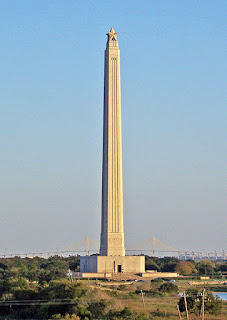It was at one time the largest company in the U.S. and virtually had a monopoly on the country's fur trade. Starting with trade in the Great lakes region and the midwest, beginning in the 1820's the company expanded into the plains area and to the Pacific Northwest. The fur trading industry played a major part in the development of both the United States and Canada for centuries.
The Many Journey's of the Yellowstone
 |
| Steamboat Yellowstone |
In fact, by the year 1832, the Yellowstone made it up the Missouri River right to the mouth of the Yellowstone River. In 1831 while on her maiden voyage, the Yellowstone made it all the way up the Missouri River to Pierre South Dakota, farther than any other steamboat to date.
The Yellowstone's itinerary was pretty much dependent on the season of the year. While working on the Missouri River the steamboat took advantage of the higher river due to April snow melts and again in June and July by favor of snow melt from the Rocky Mountains which of course occurred later. During the winter months the Yellowstone moved to the Mississippi River and worked regularly along the southern portion.
The years 1835 and 1836 were big. Texas fought against the Mexican government for it's independence and the Yellowstone steamboat joined the crusade. By this time the Yellowstone had been sold by the American Fur Company and was actually on it's third owner, Thomas Toby and Brother. The boat was dispatched to Texas for the purpose of carrying cotton bales down the Brazos River to Quintana Texas on the Gulf of Mexico. Eventually, the Yellowstone departed from New Orleans on New Years Eve 1835 and steamed to Texas loaded with arms, ammunition and volunteers to help fight for Texas.
 |
| San Jacinto Mon. |
After the Mexican War
At the end of Texas' war for independence, and after the decisive Battle of San Jacinto, the Yellowstone was used to transport the wounded Sam Houston as well as the captured Mexican commander Santa Anna along with over forty Mexican prisoners.
The plans were that the Yellowstone would actually transport Santa Ana back to Mexico but the trip was put off. Santa Anna ended up however meeting President Andrew Jackson and didn't return to Mexico until 1837, and unfortunately for him, when he did it was as a disgraced man. The Mexican government essentially refused to recognize any surrender terms put forth by Santa Anna and didn't recognize the new Texas Republic until the Treaty of Guadalupe Hidalgo in 1848 which officially ended the Mexican American War. That same treaty placed California and the southwest in U.S. hands.
Steamboats and the U.S. Military
While the steamboat Yellowstone played a key role in the Texas fight for independence, the role of steamboats and the military would not end there. Another famous steamboat, the Far West, played a big role in the Sioux Wars of 1876 when it served as command headquarters for General Terry while conducting the campaign which included Custer's Battle of the Little Bighorn. During that campaign, the stern wheeler Far West steamed all the way up the Yellowstone River in Montana to the mouth of the Little Bighorn River. This was quite a feat in itself.
The Fate of the Steamboat Yellowstone
 |
| Santa Anna, Pub. Domain |
When you research records and archives from that period, nearly 200 years ago, it's not uncommon that information is a bit sketchy. What is documented well is that early steamboats often had a short life span, sometimes five to eight years due to deadly steam boiler explosions. This was a large danger during the mid 1800's. While there is information that the Yellowstone did have work performed on it's boilers in New Orleans, there are no records I could find that indicates the Yellowstone ever suffered this fate.
History however kept the name alive with our nation's first National Park named Yellowstone Park, a tribute to both this famed steamboat and the beautiful river that runs through Montana and Wyoming.
Incredibly, the Yellowstone was involved from the far reaches of the northern Missouri River all the way down to New Orleans and then over to Texas which all occurred in her first five years of existence. While she went through several owners in a very short time, the Yellowstone was relied on continuously for either commercial or military purposes.
Texas tourists today can visit the San Jacinto Battleground State Historic Site which is located about twenty-five miles east of Houston. There you can view the magnificent San Jacinto Monument which has the distinction of being the tallest memorial column in the world rising 570 feet.
There are several museums spread out in the western United States chronicling the history of steam boating. One excellent site which has a lot of history about the steamboat Yellowstone is the Museum of the Fur Trade located in Nebraska. The museum is located three miles east of Chadron, Nebraska on U. S. Highway 20, in the northwest corner of the state. This amazing museum features every type of object exchanged by Europeans and Americans with the Native people of North America.
You may also enjoy our Western Trips photo article on the old Spanish Missions in San Antonio Texas.
(Article copyright Western Trips. Photos and images from the public domain)

